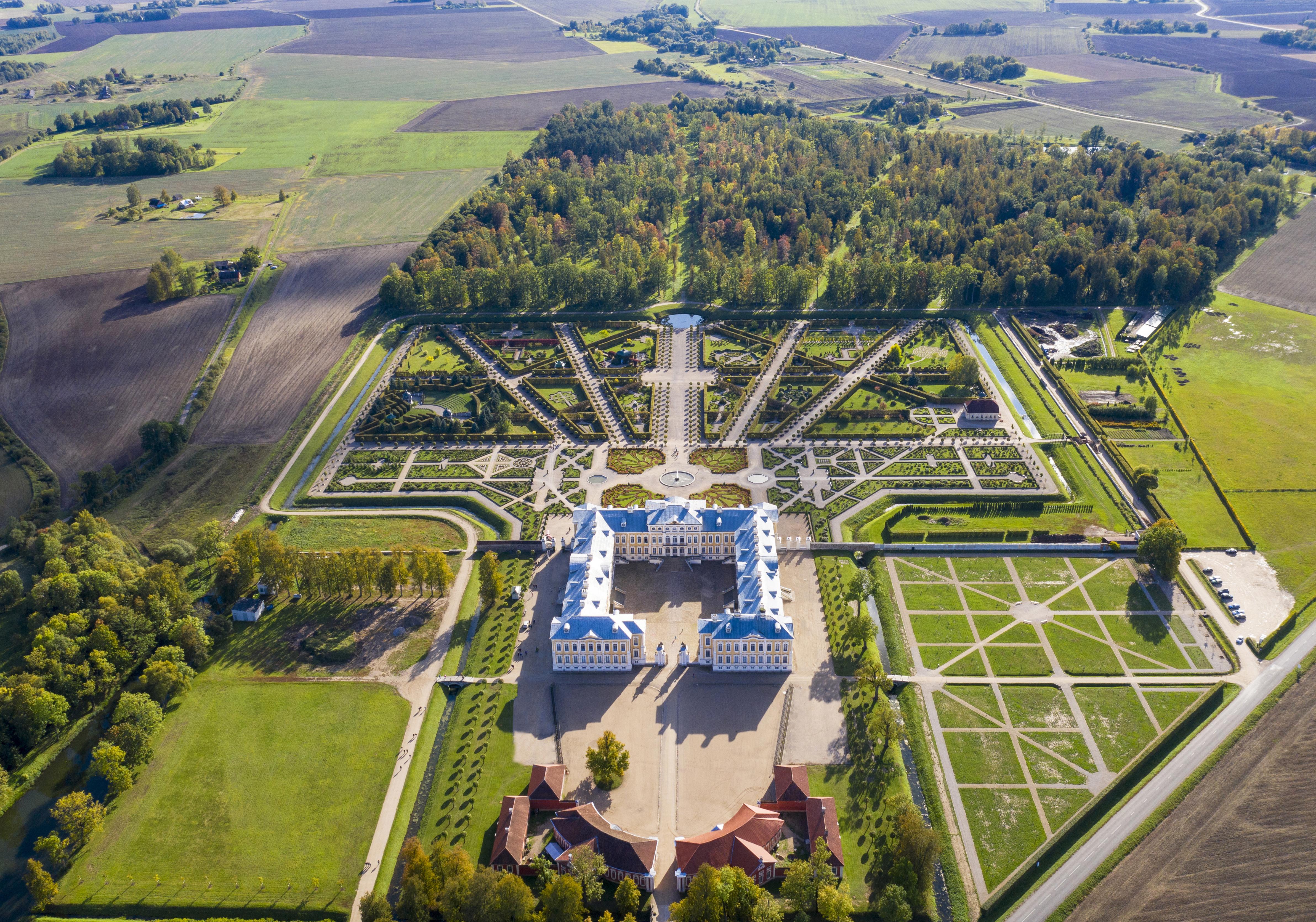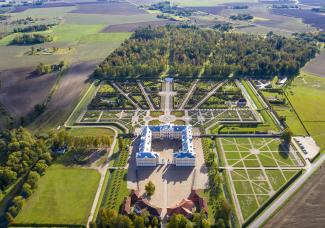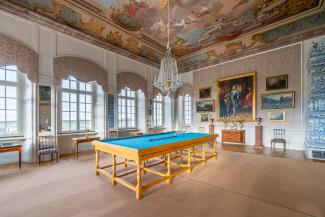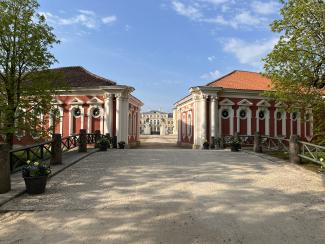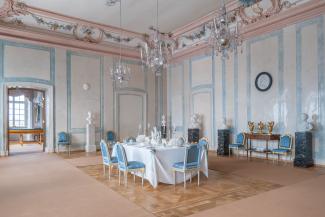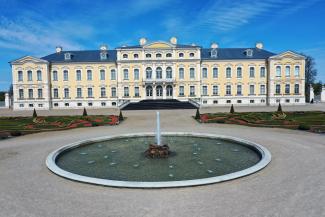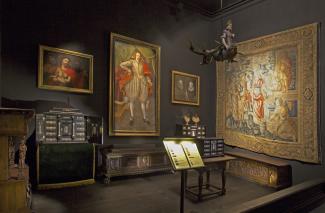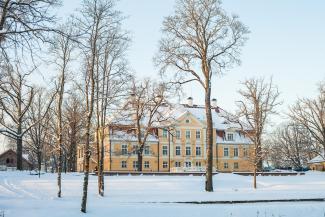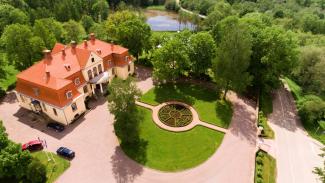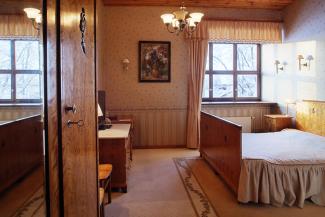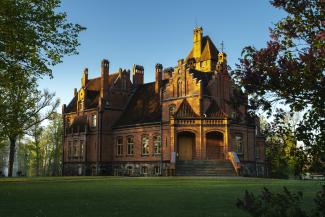The Rundale Palace is set amidst the fertile Zemgale Plains in the south of Latvia. Most of the interior decorations were created between 1765 and 1768 when a sculptor from Berlin Johann Michael Graff, and Italian painters from St. Petersburg Francesco Martini and Carlo Zucchi worked at the palace.
Palace
The representation rooms in the eastern wing of the palace – the Gilt Hall, the White Hall, and the Great Gallery – are open to the public. The central block accommodates the Duke's suite with reception parlours and private rooms, and the eastern block – a fully restored suite of Duchess's rooms.
Museum
The Rundāle Palace Museum works as a centre for research into Latvia's history, through creating collections, arranging exhibitions and producing publications.
The exhibition halls display applied art, fine art and historical expositions; the palace hosts the Early Music Festival and recitals of classical music.
The Rundāle Palace Museum has joined the Association of the Royal Residences of Europe – an organization which brings together the most prominent palaces of Europe, including Versailles, Schönbrunn, and Sanssouci.
Park
The regular French style park with its rose garden, the Green Theatre, ornamental parterres and the fountain, are open for the public. In summers, the park becomes the venue for the Garden Festival.
A Baroque palace cannot be imagined without the French garden, an elaborate architectural framework devised of green plantings that should manifest the triumph of art over nature. The park spreads out to the south of the palace, and Bartolomeo Rastrelli designed it together with the palace building. An artificial canal runs around the park, encircling also the palace and the stables. Although Rundāle's formal garden is but 10 ha large, Rastrelli has managed to fill it with an intricate maze of allées, cross paths, pergolas and bosquets.
Rose garden
The bosquets feature an impressive, almost one hectare large, rose garden that spreads on both sides of the parterres. The garden reflects the history of cultivating roses in Europe from the early 18th century till these days.
Green amphitheatre
A "green amphitheatre" has been set up in one of the bosquets, following Rastrelli's original design and the still remaining relief shapes. The venue was launched on 11 July 2004 with the performance of Georg Friedrich Händel's opera, Rinaldo.
Fountains
In front of the palace, Rastrelli's design envisaged three fountains which did not work in the 18th century; instead of them there were water basins. The central pool is enclosed by four ornamental parterres, reconstructed after Rastrelli's design, and consisting of surfaces covered with chips of brick and white marble, and lawn, all edged in trimmed boxwood hedging.
